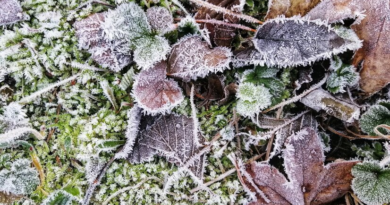November Allotment Checklist: Essential Tasks for the Month
November marks the transition into the colder months, and for allotment holders, it’s a critical time to prepare the garden for winter while setting the stage for a fruitful spring. With shorter days and dropping temperatures, November tasks focus on maintenance, protection, and forward planning. Here’s your comprehensive checklist for November allotment care, complete with practical advice to keep your plot thriving.
Clear and Tidy the Allotment
Remove Dead Plants and Debris
Begin by clearing away any dead or dying plants. These can harbor pests or diseases that might overwinter and cause problems next season. Add healthy plant material to the compost bin, but burn or dispose of diseased material to prevent contamination.
Tidy Pathways and Borders
Trim back overgrown edges, sweep pathways, and remove weeds from borders. This not only keeps the allotment looking neat but also reduces hiding spots for slugs, snails, and other pests.
Leave Some Areas Wild
While tidying is essential, consider leaving a few areas undisturbed. These can provide shelter for beneficial insects and small animals, such as hedgehogs, over winter.
Prepare the Soil
Remove Weeds
Weeds can quickly take over during the winter months. Use a hoe or hand fork to remove them now, preventing seeds from spreading.
Add Organic Matter
November is an excellent time to improve soil health by incorporating well-rotted manure or homemade compost. Spread a thick layer over the surface to act as a mulch, protecting the soil from heavy winter rain and erosion.
Test and Adjust Soil pH
If you suspect your soil is too acidic, November is a good time to add lime, which improves pH balance and prepares the ground for spring planting. Soil test kits are affordable and easy to use for this purpose.

Plant and Sow
Garlic and Onions
November is ideal for planting garlic and overwintering onion sets. Choose a sunny, well-drained spot and plant cloves and sets so that their tips are just below the surface.
Broad Beans
Sow hardy varieties of broad beans, such as ‘Aquadulce Claudia,’ directly into the ground. These beans thrive in cold conditions and will establish roots before the deep winter frost.
Fruit Bushes
Now is the time to plant bare-root fruit bushes like raspberries, blackberries, and gooseberries. Ensure the ground is well-prepared and free from weeds before planting.
Protect Crops
Frost Protection
Use fleece, cloches, or cold frames to protect vulnerable crops from frost. Brassicas, like cabbages and Brussels sprouts, will benefit from netting to protect them from pigeons as well.
Mulch Perennials
Apply mulch around the base of perennials to insulate their roots and prevent frost damage. Straw, wood chips, or even shredded leaves work well.
Check for Pests
Slugs and snails are still active in mild weather. Use slug traps, pellets (sparingly and safely), or hand-pick them during damp evenings. Regularly inspect overwintering crops for damage.

Maintain Compost Bins
Turn the Compost
Give your compost bin a good turn to aerate the material, which helps the decomposition process. If the pile is too wet, add dry materials like shredded cardboard or straw to balance moisture levels.
Add Autumn Leaves
November is the perfect time to add fallen leaves to your compost bin. Alternatively, store them separately in a leaf mold bin or bags to create nutrient-rich mulch for next year.
Harvest Remaining Crops
Seasonal Vegetables
Continue to harvest late-season crops like leeks, parsnips, and winter squash. These can often be stored for several weeks if kept in a cool, dry place.
Cut and Store Herbs
Before hard frost sets in, cut herbs like parsley, thyme, and rosemary for drying or freezing. This ensures a steady supply of flavor for winter cooking.

Plan for Next Year
Draw Up a Crop Rotation Plan
If you practice crop rotation, now is a great time to map out next year’s planting scheme. Rotating crops helps prevent soil depletion and reduces the risk of pests and diseases.
Order Seeds and Supplies
Get ahead by ordering seeds, fertilizers, and other supplies now. Many seed companies offer discounts in the off-season, and early planning ensures you’re ready when spring arrives.
Care for Tools and Equipment
Clean and Sharpen Tools
Take the time to clean and sharpen your gardening tools. This extends their lifespan and ensures they’re in peak condition for spring planting.
Store Tools Safely
Prevent rust by storing tools in a dry, secure location. Applying a thin layer of oil to metal parts can also protect them from moisture.
Service Machinery
If you use a lawnmower or rotavator, November is a good time to have it serviced. Empty fuel tanks and check moving parts for wear and tear.

Support Wildlife
Install Feeders and Nesting Boxes
Winter is a challenging time for wildlife, so consider putting up bird feeders and nesting boxes. Fill feeders with high-energy seeds, suet, and nuts to help birds through the colder months.
Create Habitats
Pile up logs or stones to create shelter for frogs, toads, and insects. These small habitats can make a big difference to local biodiversity.
Provide Water
Ensure a water source is available, such as a shallow dish or a birdbath. Check regularly to remove ice on frosty mornings.
Embrace the Slower Season
November is a quieter month on the allotment, offering a chance to reflect and prepare. Spend time observing your plot, noting what worked well this year and what you’d like to change. The winter months provide a valuable opportunity to recharge and dream of the growing season to come.
By tackling these tasks in November, you’ll not only keep your allotment in excellent condition through the winter but also lay the foundation for a thriving and productive growing season ahead. Each action, whether it’s clearing debris, planting overwintering crops, or protecting your soil, plays a vital role in ensuring your plot remains healthy and vibrant. Embracing the rhythm of the season allows you to connect with the natural cycle of growth and rest, finding joy in the quieter moments of gardening.
November is a time for reflection and planning, offering the chance to evaluate what worked well this year and what could be improved. It’s also an opportunity to appreciate the beauty of an allotment at rest—the rich textures of mulched beds, the sight of frost-kissed plants, and the knowledge that life is quietly preparing to emerge again in the spring. By investing time and care into your plot now, you’ll reap the rewards of a flourishing allotment filled with thriving crops and buzzing wildlife in the months to come.
So, wrap up warm, head out to your allotment, and enjoy the satisfaction that comes with nurturing your garden through every season. Your efforts today will ensure a fruitful, resilient plot that continues to grow in harmony with nature.




